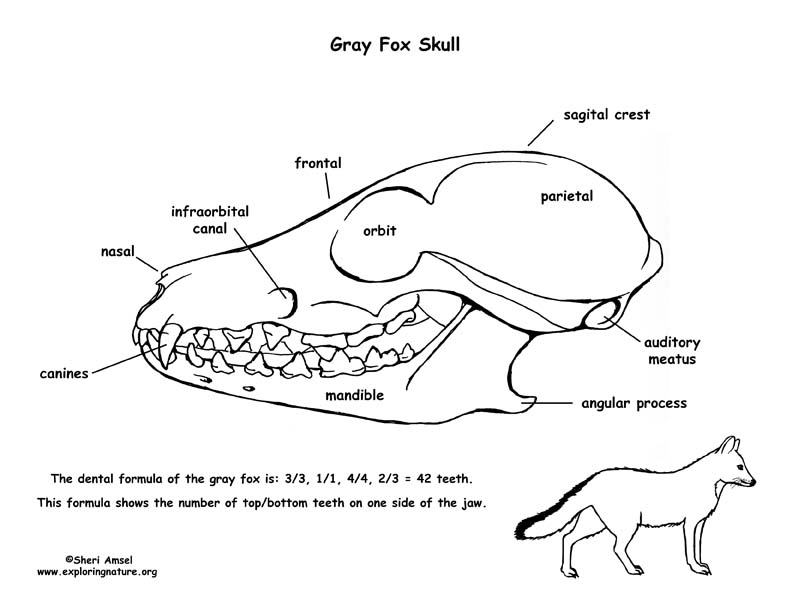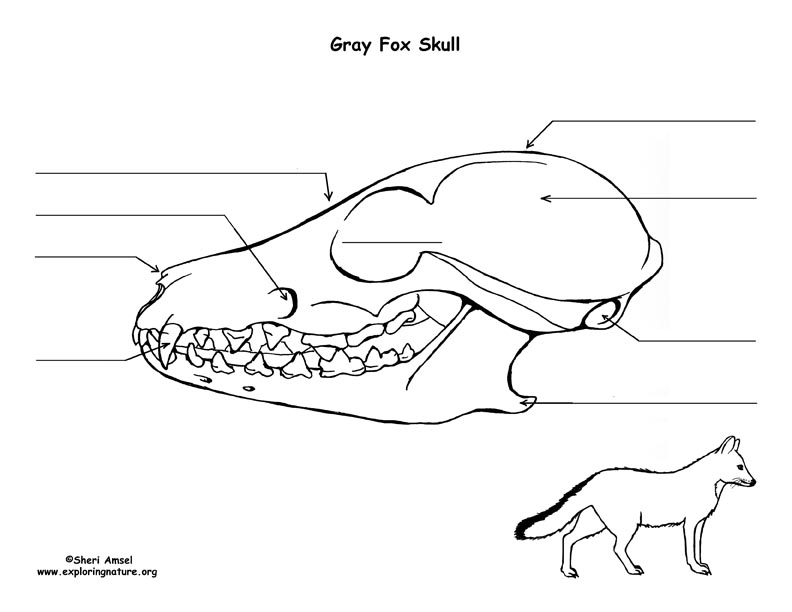

The average gray fox skull is about 5 inches long.
The skull is made up of the cranial bones (cranium) and the facial bones (which include the mandible). The joints of the cranial and facial bones are called sutures.
The cranium surrounds and protects the brain and the organs of hearing and balance. The facial bones form the structure of the face, hold the eyes, and the organs for taste and smell and anchor the teeth. They have the openings for air and food. The whole skull anchors muscles that hold the head up, allows the fox to chew, and form vocalizations. Most of the bones of the skull are flat bones, except the mandible. The mandible is attached to the skull by a type of hinge joint. It is the biggest, strongest bone of the skull.
The dental formula of the gray fox is: 3/3, 1/1, 4/4, 2/3 = 42 teeth. This formula shows the number of top/bottom teeth on one side of the jaw, so the total number comes from adding the top and bottom numbers and multiplying by 2. The gray fox's dental formula shows that they have a total of 6 incisors on top, 6 incisors on bottom, 2 canines on top, 2 canines on bottom, 8 premolars on top, 8 premolars on bottom (that look like molars), 4 molars on top and 6 molars on bottom, for a total of 42 teeth.

